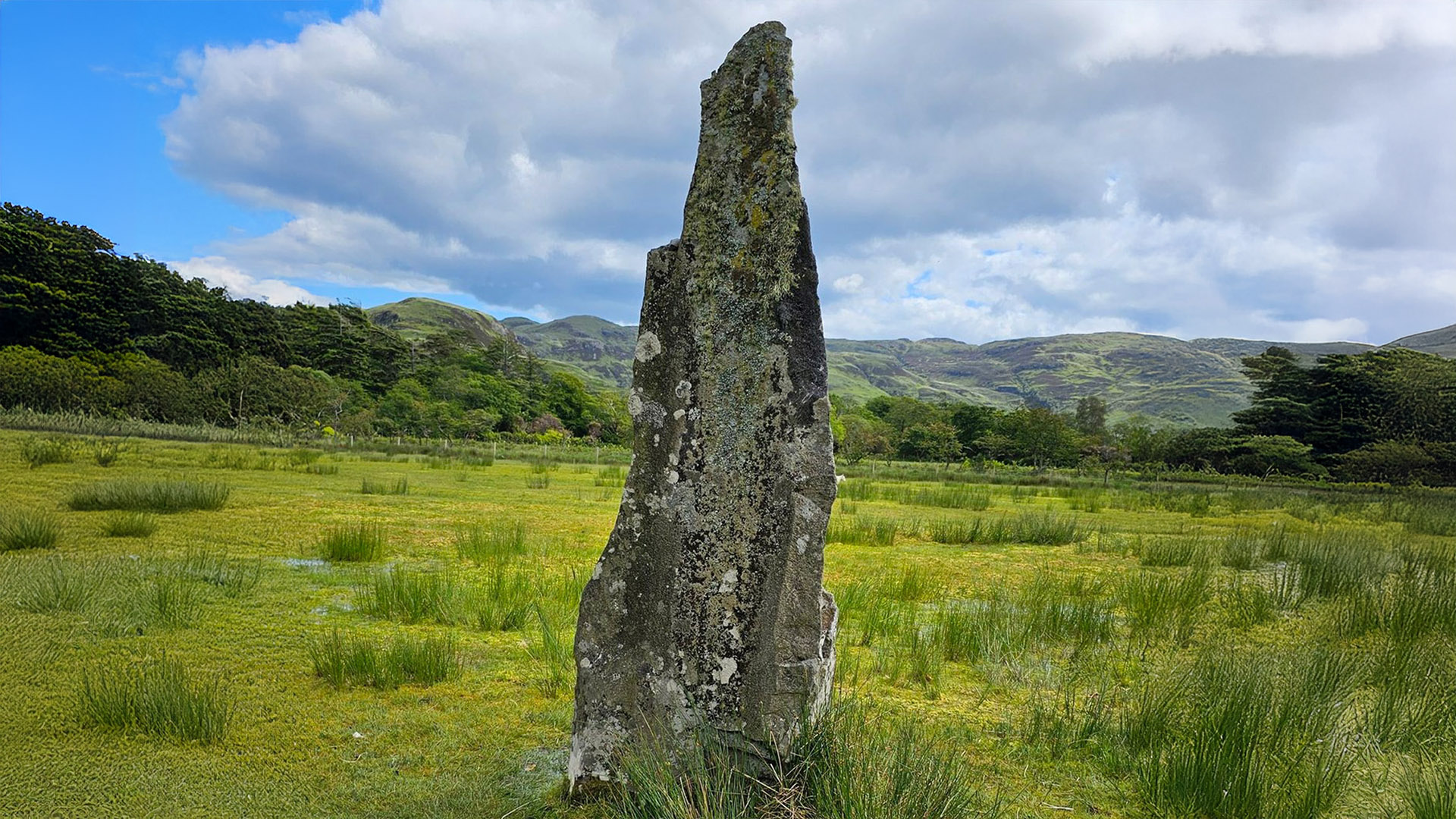Tucked away at the head of Loch Buie, beneath the brooding slopes of Ben Buie, lies one of Mull’s most enigmatic and atmospheric sites: the Lochbuie Standing Stones. This quiet field, scattered with ancient granite monoliths, holds the only known stone circle on the Isle of Mull—and with it, whispers of a prehistoric past that still lingers in the land.
A Circle of Mystery
The Lochbuie stone circle is the only complete stone circle on the Isle of Mull, and it stands in a field beneath the gaze of Ben Buie, within the grounds of Lochbuie House. It dates to the late Neolithic or early Bronze Age, around 3000–2000 BCE, and is thought to have served a ritual or ceremonial purpose, possibly connected to seasonal cycles or solar events.
The circle originally consisted of nine granite slabs, arranged in a ring approximately 12.3 metres in diameter. Today, eight stones remain standing, while the ninth has been replaced by a low boulder to mark its original position. The stones vary in height from 1.2 to 2 metres, and notably, their flattest faces are turned inward—a feature seen in other Neolithic circles and possibly linked to symbolic or functional design.
The site is situated on level pasture, about 10 metres above sea level, and its placement—between sea, mountain, and sky—adds to its atmospheric power. Though modest in scale compared to mainland sites like Callanish or Kilmartin, Lochbuie’s circle is striking for its intimacy and setting, offering a rare glimpse into prehistoric life on the Hebridean fringe.

One of the Lochbuie outliers, this 3-metre monolith stands southwest of the circle, aligned with the winter solstice sunset.
The Outliers: Alignments and Enigmas
Three outlying stones surround the main circle, each positioned at significant distances and orientations:
- 4.6 metres southeast – A pointed granite block, about 0.85 metres high, possibly marking a close ceremonial boundary.
- 40 metres southwest – A dramatic 3-metre-high monolith, tapering to a narrow top. Its alignment (azimuth ~223.6°) corresponds closely with the setting sun at the winter solstice, suggesting a deliberate astronomical function.
- 115 metres southwest – A flat-sided stone, now broken at the top, originally over 2 metres high. Its orientation (azimuth ~237°) aligns with the sunset at the winter quarter days (early November and February), reinforcing the theory that the site may have served as a solar calendar.
These alignments are supported by archaeoastronomical studies, including those by Alexander Thom and later researchers, who noted that such outliers often marked solar or lunar events. While we can’t know their exact purpose, the precision of their placement suggests a sophisticated understanding of the landscape and sky.
How to Get There
As you drive toward Lochbuie on the single-track road from the A849, the landscape opens into moorland just before the village. Look for a small stone bridge—this is your landmark.
- Park just before the bridge—there’s space for 1–2 cars.
- On the left-hand side, you’ll see a field gate with a sign indicating access to the stone circle.
- Go through the gate and follow the white marker stones across the open field.
- The ground is often wet and boggy, so sturdy waterproof boots are essential.
- Head toward a small grove of trees in the corner of the field.
- At the grove, go through a second gate.
- You’ll pass a solitary standing stone—one of the outliers.
- From there, turn left—the main circle lies in the northeast corner of the field, partially enclosed by rhododendrons.
There are no fences around the stones themselves, no signage, and no crowds—just the wind, the sky, and the quiet presence of the past.
Making the Most of Your Visit
The Lochbuie stones are more than archaeological curiosities. They’re part of a layered landscape that includes:
- Moy Castle, a 15th-century Maclaine stronghold now in romantic ruin.
- St. Kilda’s Church, a peaceful 19th-century chapel with a walled graveyard.
- Laggan Sands, a sweeping beach perfect for reflection or a windswept picnic.
Whether you’re a history enthusiast, a photographer chasing golden light, or simply someone drawn to quiet places with deep roots, the Lochbuie Standing Stones offer a rare kind of stillness. It’s a place where time seems to pause—where the past feels just a little closer.
